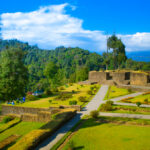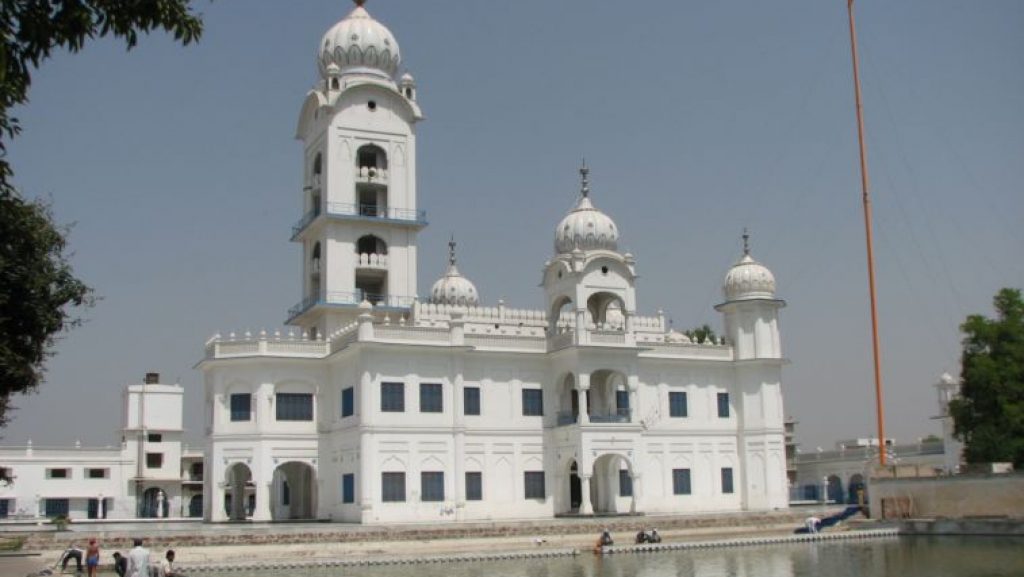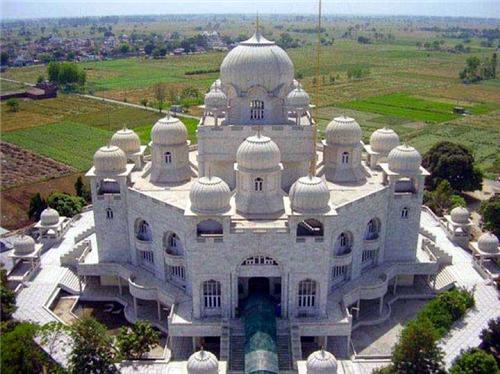Now Reading: Best Places to Visit in Gurdaspur – Dera Baba Nanak, Shahpurkandi Fort & More
-
01
Best Places to Visit in Gurdaspur – Dera Baba Nanak, Shahpurkandi Fort & More

Best Places to Visit in Gurdaspur – Dera Baba Nanak, Shahpurkandi Fort & More
1.Chhota Ghallughara

In 1740 Massa ranghar suffered decapitation as punishment executed by Sukha Singh and mehtab Singh after the desecration of Harirnander Sahib. The Khalsa members developed a deep admiration for Sukha Singh which led him to take control of his own jatha. In the beginning of 1746 Sukha Singh united with Sardar jassa Singh Ahluwalia to advance northward against the Eminabad territories in Gujranwala district when local jagirdar Jaspat Rai the brother of diwan Lakhpat Rai launched an attack. The encounter led to the death of Jaspat Rai. Lakhpat Rai brought upon gruesome retribution after his brother received a fatal blow. At Shahid Ganj both residents of Lahore and priests who carried Guru Granth Sahib faced decapitation while all copies of Guru Granth Sahib discovered in the city were burned. Day after day the Governor of Lahore received many Sikh heads as compensation for executing hundreds of the Sikh faith. Lakhpat Rai emptied the pool of the temple during his plunder of Harimandar Sahib.
Yahiya Khan directed the massive force together with Lakhpat Rai as they invaded the Khalsa territories in May 1746. The Sikhs attempted to move north of Lahore yet Hillman placed his troops across their route. A few Sikhs fought free of the siege and reached the mountainous area as others returned to attempt crossing through the Bari Doab towards the arriving Sikh military columns. Kahnuwan swamps became the fatal trap where thousands of Sikhs met their deaths resulting in seven thousand deaths and Lahore troops capturing three thousand prisoners who were executed at Shahid Ganj. Historians remember this significant Sikh historical event as Chhota Ghallughara or minor holocaust.
2.Gurudwara Sri Kandh Sahib

The Sikh devotees hold Gurudwara Sri Kandh Sahib dear as it stands in Batala town within the Gurdaspur district of Punjab. The Sikh holy site maintains great significance because it marks the central event of Guru Nanak Dev Ji’s Sikhism foundation where He married Mata Sulakhni Ji.
Historical Significance
In 1487 A.D. Guru Nanak Dev Ji got married with Mata Sulakhni Ji at Gurudwara Sri Kandh Sahib following his arrival in Batala from his position in Sultanpur Lodhi.
According to tradition Guru Nanak Dev Ji spent his time resting by the famous Kandh mud wall before his marriage ceremony took place at this site where the wall remains preserved for visitors inside marked through Gurudwara. Kandh Sahib received its name from this historic wall because Guru Ji remains present into eternity through that sacred event.
3.Achleshwar Dham

Achleshwar Dham serves as a spiritual magnet lying across from Gurudwara and is officially known as Achaleshwar Temple. The religious site provides peaceful surroundings for worshipers along with revealing insights into Indian mythology as well as the country’s ancient cultural heritage.
Achleshwar Dham exists as an ancient religious site according to local temple board inscriptions which trace its origins to the Satyug period believed by Hindus to be the most divine among the four Yugas (epochs). The sacred temple functions as both worship ground and sacred historical artifact that allows generations to access eternal devotion and devotion.
Lord Kartikeya who holds the names Kartik and Kartikeya is the son of Lord Shiva and Goddess Parvati thus making this temple a special place of worship. South Indian followers treat Kartikeya as their god of victory while he maintains a special position of worship throughout the region. Physical reverence and peaceful thought are accessible at Achleshwar Dham because this site honors Lord Kartikeya in a serene environment.
Many people who visit the temple share stories about the calm presence felt at its location. Through an enduring spiritual connection modern worshipers access divine descriptions from the bygone era of history.
The Gurudwara vicinity becomes a perfect opportunity to experience the historical and spiritual monument of Achleshwar Dham which remains an active part of mythological dimensions.
Related articles :Top 5 Best Places to Visit in Ferozepur – Hussainiwala Border, Anglo Sikh War Memorial & More
Stay Informed With the Latest & Most Important News
-
 01Top 5 Best Places Visiting in Gyalshing – Monasteries, Lakes & Scenic Escapes
01Top 5 Best Places Visiting in Gyalshing – Monasteries, Lakes & Scenic Escapes -
 02Top 5 Best Places Visiting in Panna – Temples, Waterfalls & Wildlife Escapes
02Top 5 Best Places Visiting in Panna – Temples, Waterfalls & Wildlife Escapes -
 03Top 5 Best Places to Visit in Malerkotla – Malerkotla Fort, Sheesh Mahal & More
03Top 5 Best Places to Visit in Malerkotla – Malerkotla Fort, Sheesh Mahal & More -
 04Top 10 Best Places Visiting in Dakshina Kannad for Culture, Nature & Coastal Charm
04Top 10 Best Places Visiting in Dakshina Kannad for Culture, Nature & Coastal Charm -
 05Top 2 Best Places Visiting in Chitradurga for History, Nature & Adventure
05Top 2 Best Places Visiting in Chitradurga for History, Nature & Adventure -
 06Best Places Visiting in Shopian – Explore Top Attractions & Hidden Gems
06Best Places Visiting in Shopian – Explore Top Attractions & Hidden Gems -
 07Best Places Visiting in Narmadapuram – Temples, Waterfalls & Wildlife Escapes
07Best Places Visiting in Narmadapuram – Temples, Waterfalls & Wildlife Escapes














Pingback: Best Places to Visit in Hoshiarpur – Takhni Wildlife Sanctuary, Sheesh Mahal & Gurudwara Harian Velan